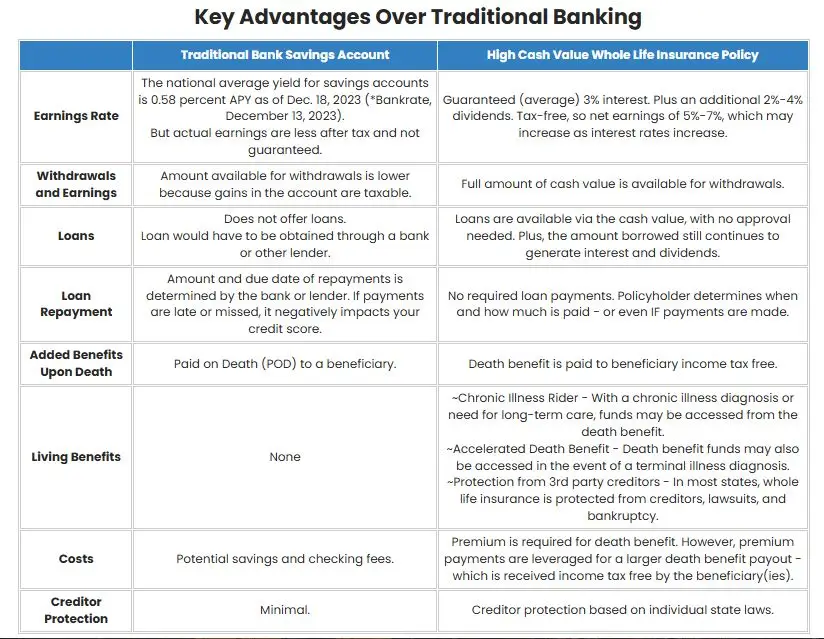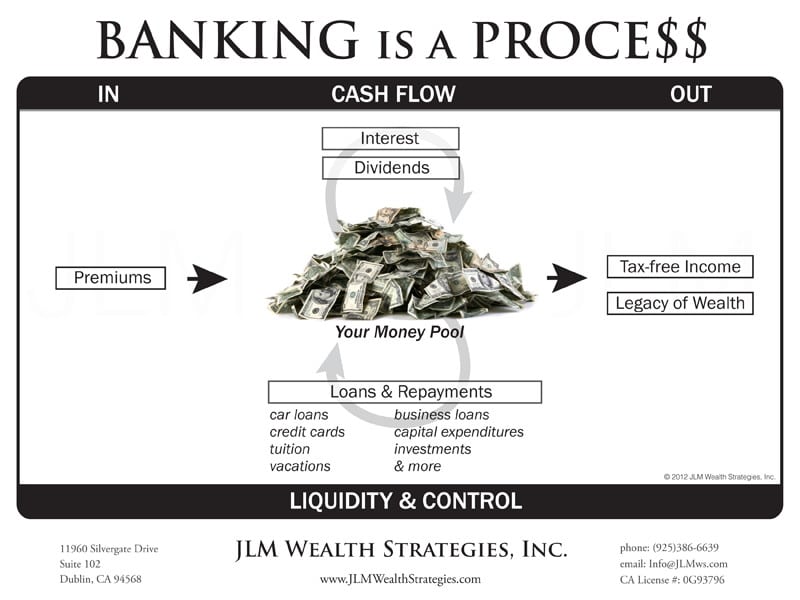All Categories
Featured
Table of Contents
Okay, to be reasonable you're actually "banking with an insurance provider" instead than "financial on yourself", but that concept is not as simple to offer. Why the term "infinite" financial? The idea is to have your money operating in several locations at the same time, rather than in a solitary place. It's a bit like the idea of acquiring a home with money, after that borrowing versus your house and putting the cash to operate in one more investment.
Some people like to speak regarding the "speed of cash", which primarily suggests the exact same point. That does not imply there is absolutely nothing worthwhile to this principle once you obtain past the marketing.
The entire life insurance policy sector is plagued by excessively expensive insurance coverage, huge compensations, unethical sales techniques, reduced rates of return, and badly informed customers and salespeople. If you desire to "Bank on Yourself", you're going to have to wade right into this sector and actually get whole life insurance. There is no alternative.
The guarantees fundamental in this item are vital to its function. You can obtain against most sorts of cash worth life insurance policy, however you should not "financial institution" with them. As you get a whole life insurance plan to "bank" with, keep in mind that this is a totally different section of your economic strategy from the life insurance policy section.
Buy a big fat term life insurance policy plan to do that. As you will see below, your "Infinite Financial" policy really is not going to accurately provide this essential economic feature. An additional problem with the fact that IB/BOY/LEAP relies, at its core, on a whole life plan is that it can make getting a policy bothersome for much of those thinking about doing so.
Infinite Banking Explained
Unsafe leisure activities such as SCUBA diving, rock climbing, skydiving, or flying also do not blend well with life insurance items. That may work out great, considering that the factor of the policy is not the fatality advantage, yet keep in mind that acquiring a policy on minor youngsters is much more costly than it ought to be considering that they are usually underwritten at a "standard" price rather than a chosen one.

The majority of plans are structured to do a couple of points. Many generally, policies are structured to take full advantage of the compensation to the representative marketing it. Negative? Yes. Yet it's the truth. The compensation on an entire life insurance policy plan is 50-110% of the initial year's costs. In some cases plans are structured to make the most of the survivor benefit for the premiums paid.
With an IB/BOY/LEAP plan, your goal is not to make best use of the fatality benefit per buck in costs paid. Your goal is to make best use of the cash money value per buck in costs paid. The price of return on the policy is extremely important. One of the finest methods to maximize that factor is to obtain as much cash as possible right into the plan.
The finest means to boost the price of return of a plan is to have a relatively little "base plan", and after that placed more cash money right into it with "paid-up additions". With more money in the plan, there is even more cash money value left after the costs of the fatality advantage are paid.
A fringe benefit of a paid-up addition over a routine costs is that the payment rate is lower (like 3-4% as opposed to 50-110%) on paid-up enhancements than the base plan. The much less you pay in payment, the higher your price of return. The price of return on your cash value is still mosting likely to be adverse for a while, like all cash money worth insurance coverage plans.
It is not interest-free. It might set you back as much as 8%. The majority of insurer just supply "direct acknowledgment" loans. With a straight recognition car loan, if you obtain out $50K, the returns rate put on the money worth yearly just relates to the $150K left in the policy.
Alliance Bank Visa Infinite
With a non-direct recognition financing, the company still pays the very same returns, whether you have "borrowed the money out" (practically versus) the policy or not. Crazy? Who knows?
The companies do not have a source of magic cost-free money, so what they provide in one place in the plan should be extracted from an additional place. If it is taken from an attribute you care less around and place into a feature you care a lot more about, that is a great thing for you.
There is one more important function, generally called "clean fundings". While it is great to still have actually returns paid on cash you have actually gotten of the plan, you still have to pay rate of interest on that loan. If the dividend rate is 4% and the car loan is billing 8%, you're not exactly coming out ahead.
With a clean loan, your financing rate of interest rate coincides as the reward price on the policy. So while you are paying 5% interest on the financing, that rate of interest is entirely balanced out by the 5% reward on the loan. In that respect, it acts just like you took out the money from a bank account.

5%-5% = 0%-0%. Same very same. Thus, you are currently "financial on yourself." Without all 3 of these elements, this plan merely is not going to work very well for IB/BOY/LEAP. The biggest issue with IB/BOY/LEAP is the individuals pressing it. Almost all of them stand to benefit from you purchasing into this concept.
As a matter of fact, there are lots of insurance coverage representatives discussing IB/BOY/LEAP as an attribute of whole life who are not actually selling policies with the needed functions to do it! The trouble is that those that understand the idea best have a massive problem of interest and usually inflate the advantages of the concept (and the underlying plan).
Infinite Banking Concept Calculator
You need to contrast loaning versus your policy to taking out cash from your savings account. No money in cash money worth life insurance coverage. You can place the money in the financial institution, you can invest it, or you can buy an IB/BOY/LEAP policy.
You pay taxes on the interest each year. You can save some more money and placed it back in the financial account to start to earn passion once again.
It expands over the years with funding gains, returns, rents, etc. Several of that income is strained as you accompany. When it comes time to get the boat, you sell the financial investment and pay taxes on your lengthy term funding gains. You can save some even more money and get some more financial investments.
The money value not used to spend for insurance coverage and commissions grows over the years at the returns rate without tax obligation drag. It begins out with adverse returns, however hopefully by year 5 or so has damaged also and is growing at the returns price. When you go to buy the boat, you borrow against the policy tax-free.
Whole Life Insurance Infinite Banking
As you pay it back, the cash you paid back begins growing once more at the returns price. Those all job pretty likewise and you can compare the after-tax prices of return.
They run your debt and offer you a finance. You pay rate of interest on the borrowed money to the bank until the finance is repaid. When it is settled, you have a nearly pointless watercraft and no money. As you can see, that is nothing like the first 3 options.
Latest Posts
Infinite Banking Insurance
Be Your Own Bank With The Infinite Banking Concept
Life Insurance Banking